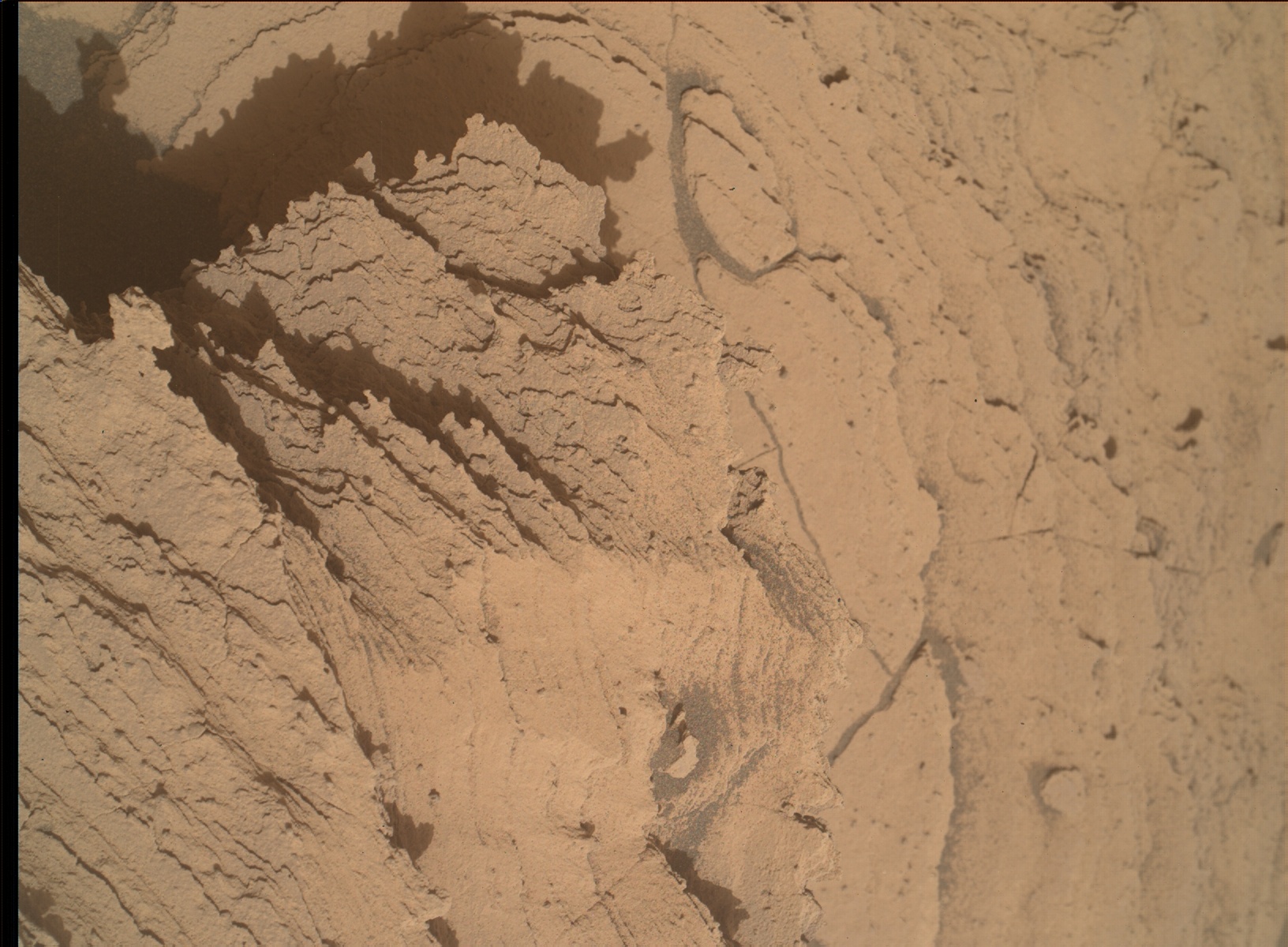2 min read

The Perseverance rover has been exploring the top of the Western fan in Jezero crater for some time now, but new observations never fail to offer new insights. Sitting at the edge of Belva crater on top of the fan, Perseverance has been investigating sediments that were transported to their location via the ancient streams that flowed into Jezero. Each unique rock, boulder, or sediment that the Science team examines could be a new piece of the puzzle for understanding source terrain, transport, and erosional processes occurring within and beyond Jezero.
Most recently, Perseverance performed an abrasion named Ouzel Falls, pictured above. Slightly obscured by shadow from the rover in this image, this abrasion patch is exciting because of the large grains seen in and around the abrasion patch. Larger grains are good targets for exploring elemental and mineral composition with PIXL and SHERLOC because these instruments can collect multiple analysis points on each large grain. Compositional information of the grains from these instruments can show if the grains are polymineralic or monomineralic. Grains that are determined to be polymineralic, or those that are made up of multiple minerals, can provide important information about the geology and composition of their source terrains. Furthermore, larger grains that are polymineralic could preserve minerals that may not have survived transport as individual grains due to being too small or susceptible to weathering, so this abrasion patch could contain minerals that we haven’t seen before.
As with every abrasion, sample, image, scan, or measurement made by Perseverance and its science payload, there is always excitement about what new answers may be found and how many new questions will arise. The Science team analysis of the coarse grains in the Ouzel Falls abrasion will help inform the next steps of the mission, toward the edge of the fan and outside Jezero crater.
Written by Eleanor Moreland, Ph.D. Student at Rice University







